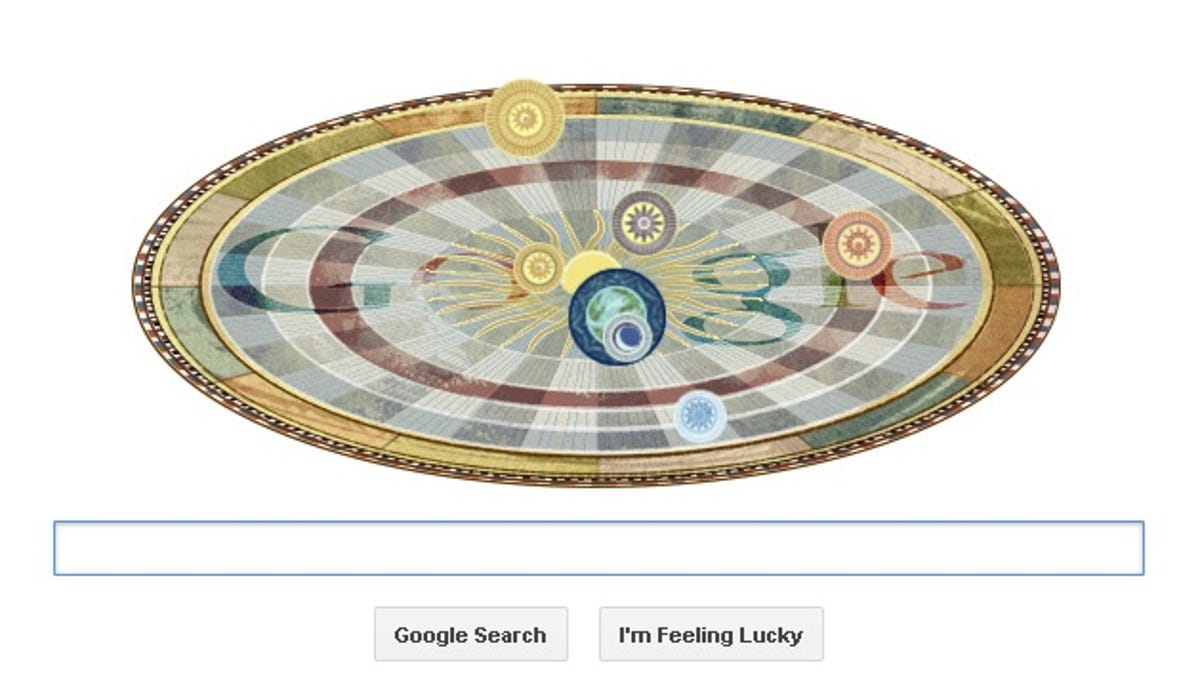Google doodle does circles around Copernicus' birthday
Web giant celebrates the 540th birthday of the astronomer best known for his theory that the sun -- and not the Earth -- was at the center of the universe.

Google is invoking the name Copernicus again, but this time it's not a joke.
The Web giant is celebrating with a doodle the 540th birthday of the Renaissance mathematician and astronomer who challenged the way people look at the universe. Nicolaus Copernicus, who was born in 1473, is perhaps best known for his heliocentric theory, which asserted that the sun, and not the Earth, was at the center of the universe.
The doodle is a representation of Copernicus' model for the solar system -- a golden sun encircled by six planets on stylized plane.
In an effort to improve the calendar, the Catholic church appealed to Copernicus in 1514. His heliocentric theory was central to "De Revolutionibus Orbium Coelestium" ("On the Revolutions of the Celestial Spheres"), which Copernicus finished in 1530. The theory challenged the long-held belief that the Earth was the stationary center of the universe with other planets, including the sun and moon, rotating around it.
"De Revolutionibus Orbium Coelestium" was published in 1543, shortly before Copernicus died on May 24 at age 70. (Legend has it the first copy was placed in his hands the day he died.) After centuries of searching, his grave was located in 2005, allowing his remains to be re-interred under a tombstone that bears a representation of Copernicus' model of the solar system.
In what is widely regarded as one of the greatest Internet hoaxes, Google borrowed the great astronomer's name in 2004 in a recruiting effort for the Copernicus Center -- its new "lunar hosting and research center." The Google Copernicus Hosting Environment and Experiment in Search Engineering (G.C.H.E.E.S.E.) was described as a research center for high-density, high-delivery hosting (HiDeHiDeHo).

